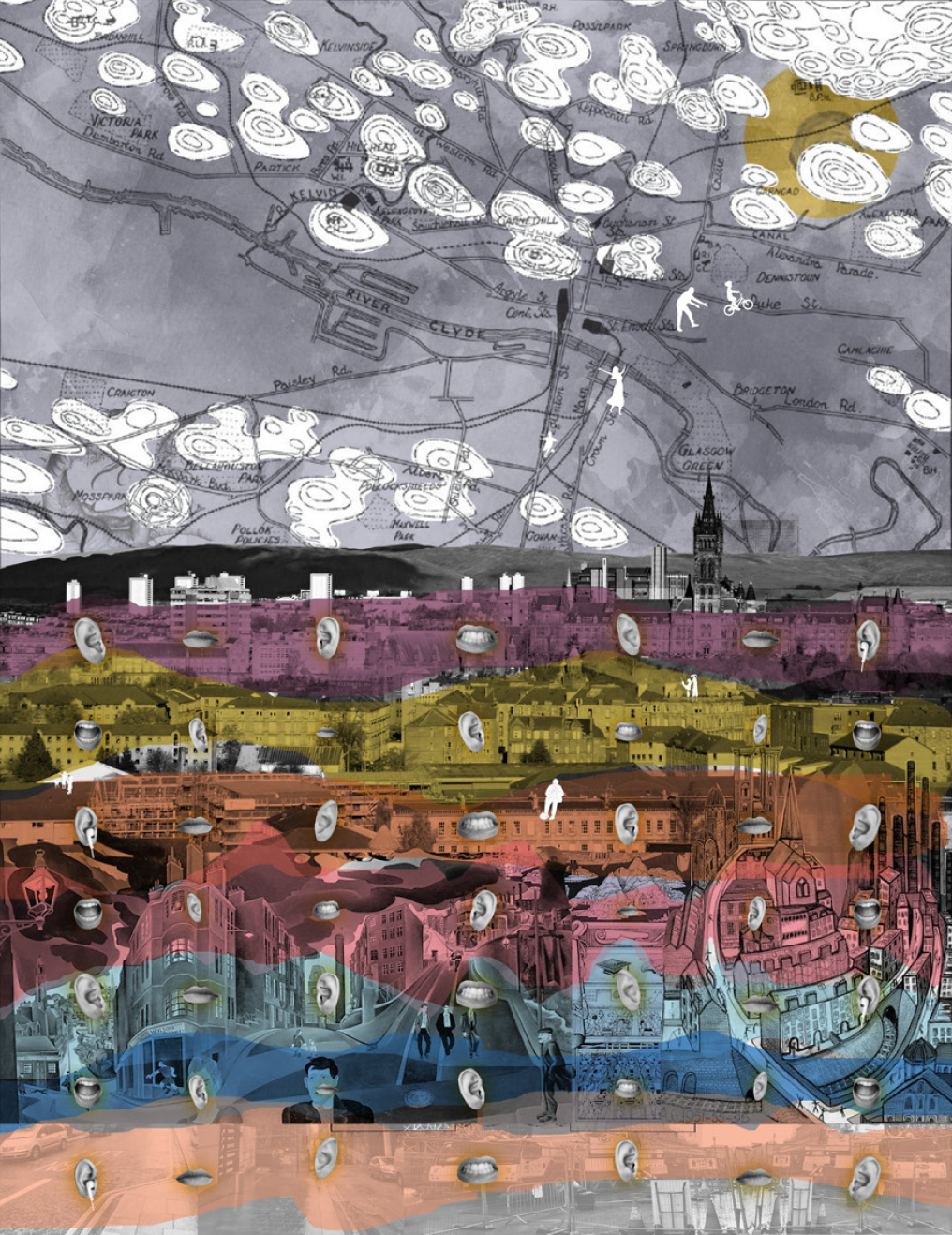Once upon a time, Mersus Memoria began its life as two thesis ideas responding to the question of the year – ‘What is the Ethical City?’ The distressing rise of domestic abuse during the pandemic and the verbal construction that crime writers use in their narratives of the city were drivers of the research at the start. In re-directing the thesis to Glasgow-based fiction, a theme of underground spaces and troubled people emerged. Mersus Memoria seeks to explore the potential of underground spaces as response to the climate crisis, tie the ruin of Mackintosh Building into the high street, and furnish a centre for storytelling.
The program of Mersus Memoria, like the Institute in Glasgow-based novel Lanark, is primarily underground. Recording studios, meeting rooms, lecture halls, lounge areas, covert housing units, and offices occupy the space inside this section of the Garnethill drumlin. It would not be unusual for the everyday pedestrian to pop in on a break from work to grab a bite to eat, attend a therapy appointment, or learn the story of another Glaswegian. This flurry of activity serves to mask its role of working with charities to allow people to flee domestic abuse. Morphology of the underground centre draws on local typologies including mines, air raid shelters, and subway stations and tunnels.
A phased approach to site planning allows a sensitive adaptation of the destroyed block containing the Mackintosh Building and former O2 theatre, preserving memories for future generations. The process includes construction of a brick kiln, excavation of underground vaults for the centre, reclaiming the kiln into the hill as part of a public park on Sauchiehall St, and reopening the Mackintosh Building Ruin to tourists and other pedestrians.

